18 Month Online Milestone Checklist
Points to show you something interesting
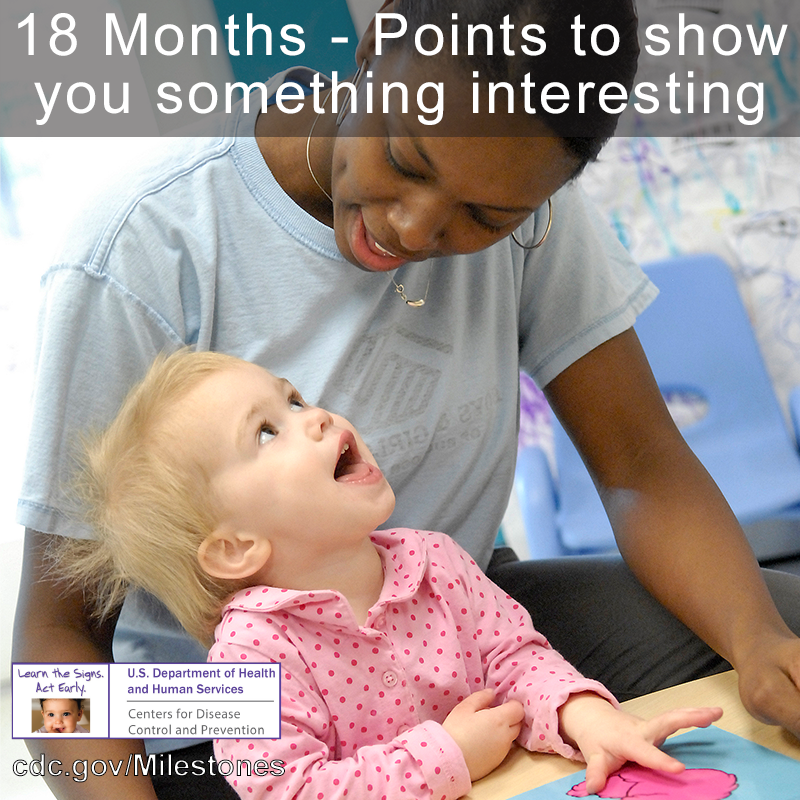
Puts hands out for you to wash them
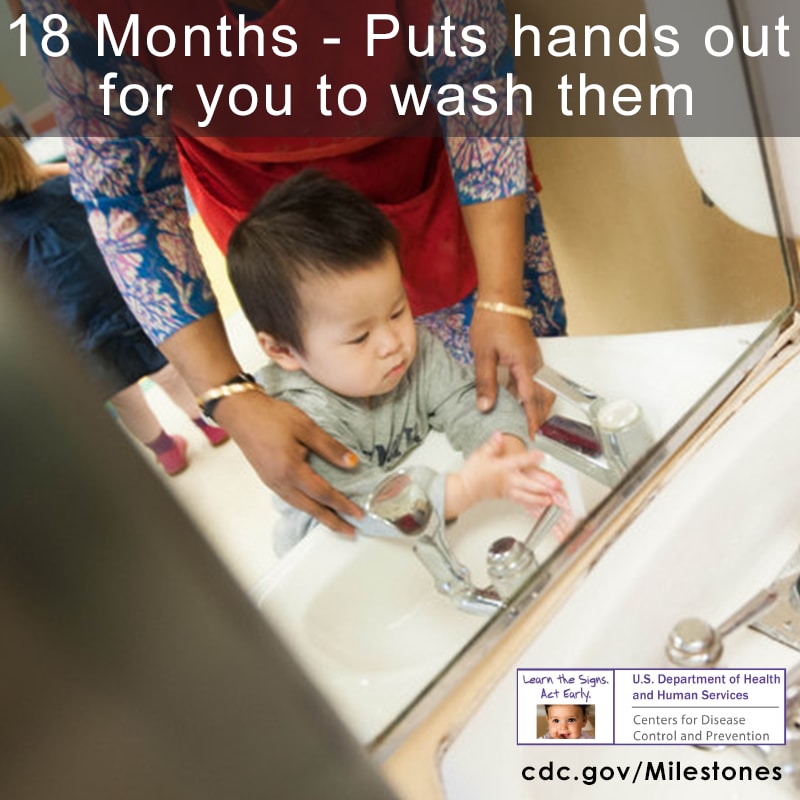
Looks at a few pages in a book with you
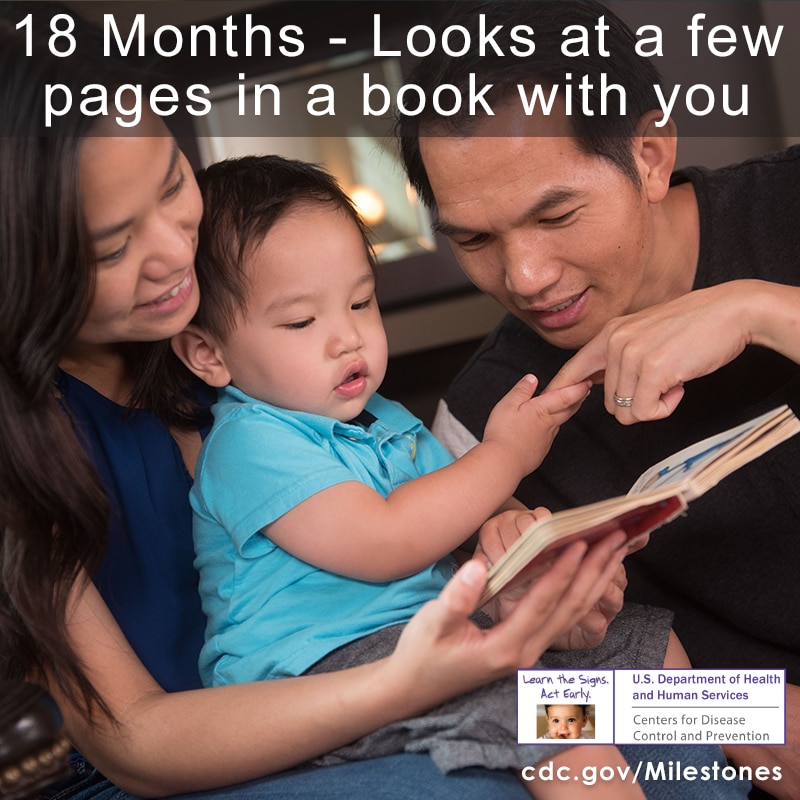
Helps you dress him by pushing arm through sleeve or lifting up foot
Tries to say three or more words besides “mama” or “dada”
Follows one-step directions without any gestures, like giving you the toy when you say, “Give it to me.”
Copies you doing chores, like sweeping with a broom
Plays with toys in a simple way, like pushing a toy car
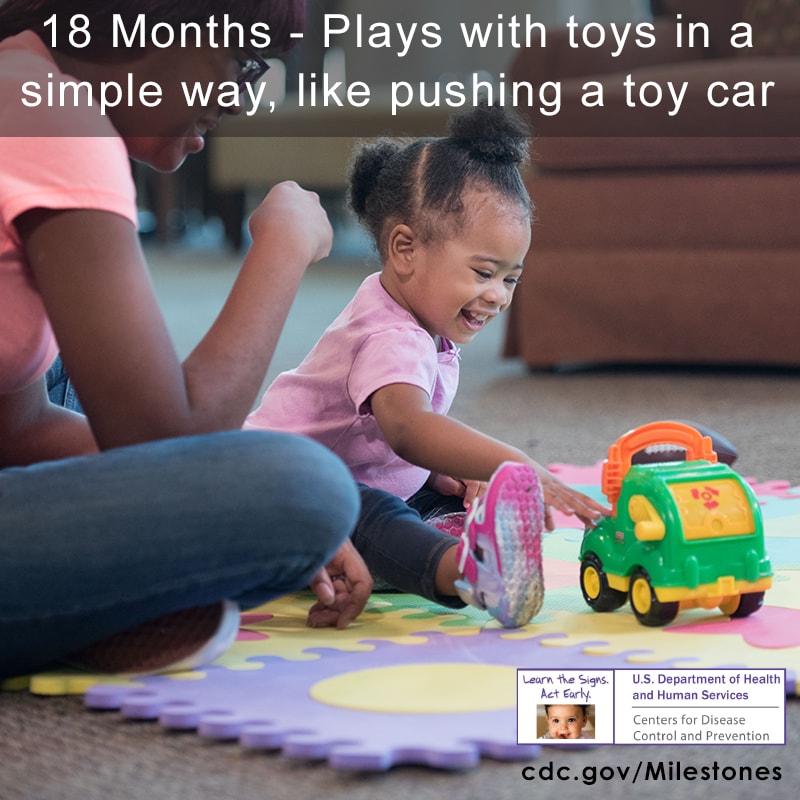
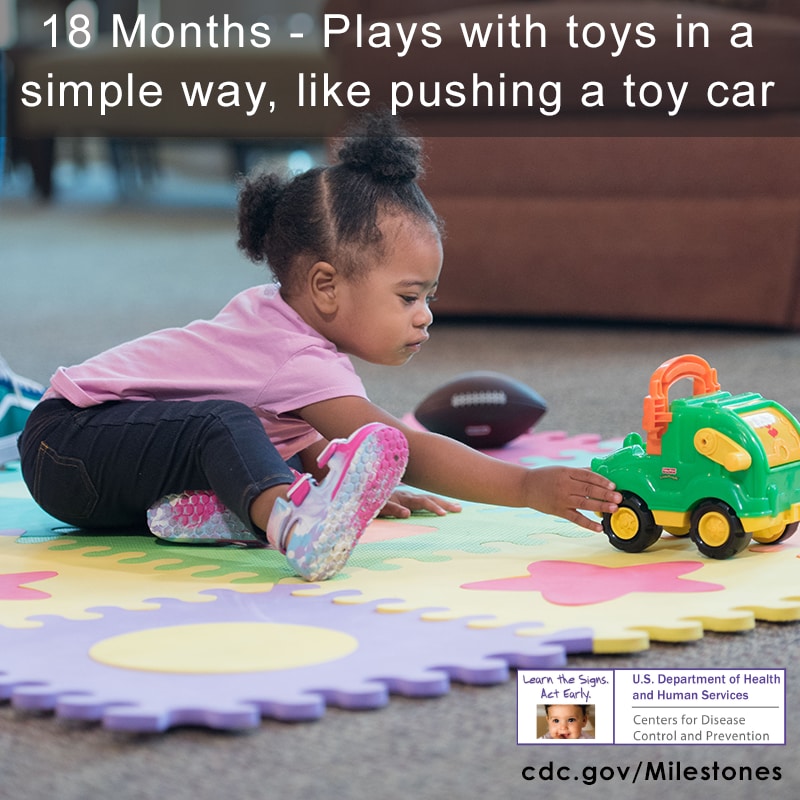
Walks without holding on to anyone or anything
Scribbles
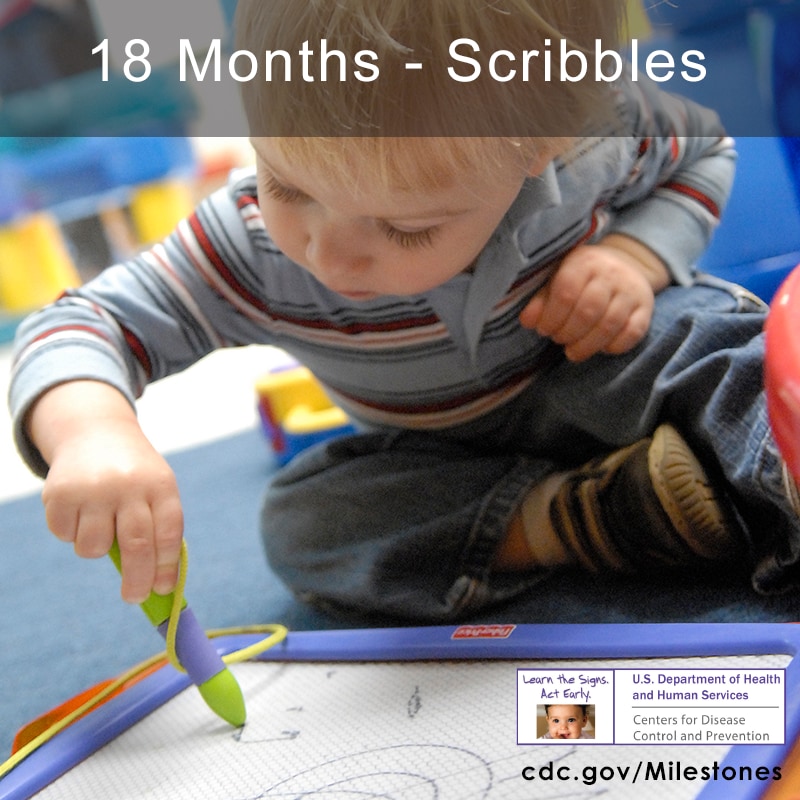
Drinks from a cup without a lid and may spill sometimes

Feeds himself with his fingers
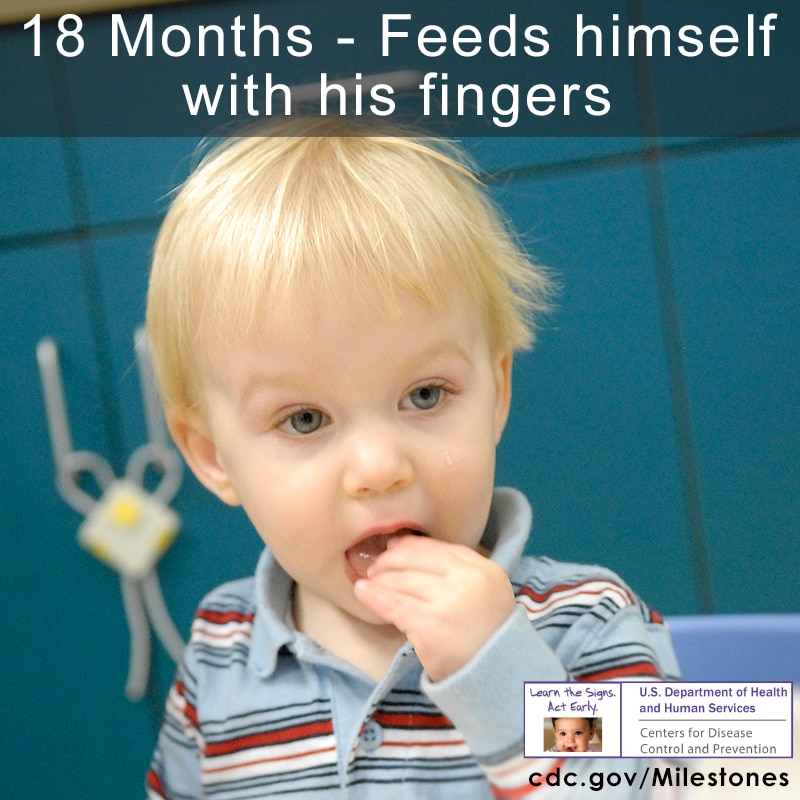
Tries to use a spoon
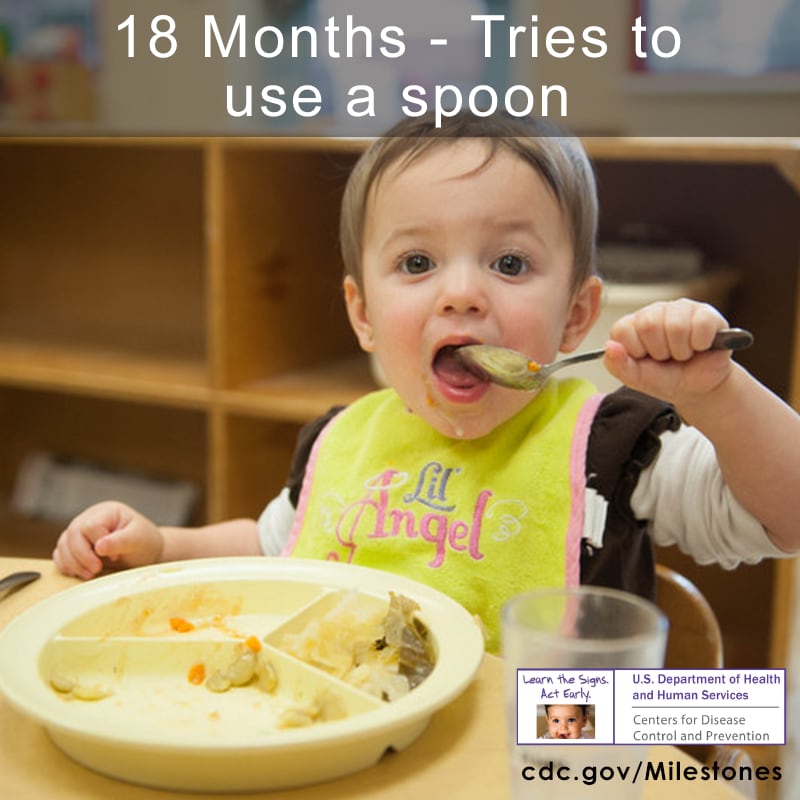
Climbs on and off a couch or chair without help
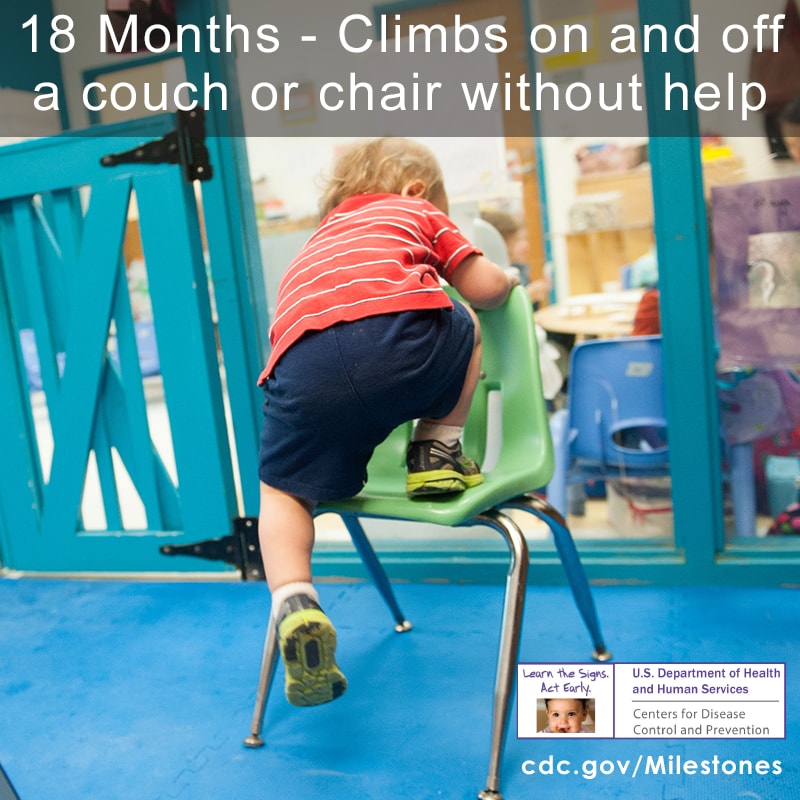
Moves away from you, but looks to make sure you are close by
Last Reviewed: June 6, 2023
